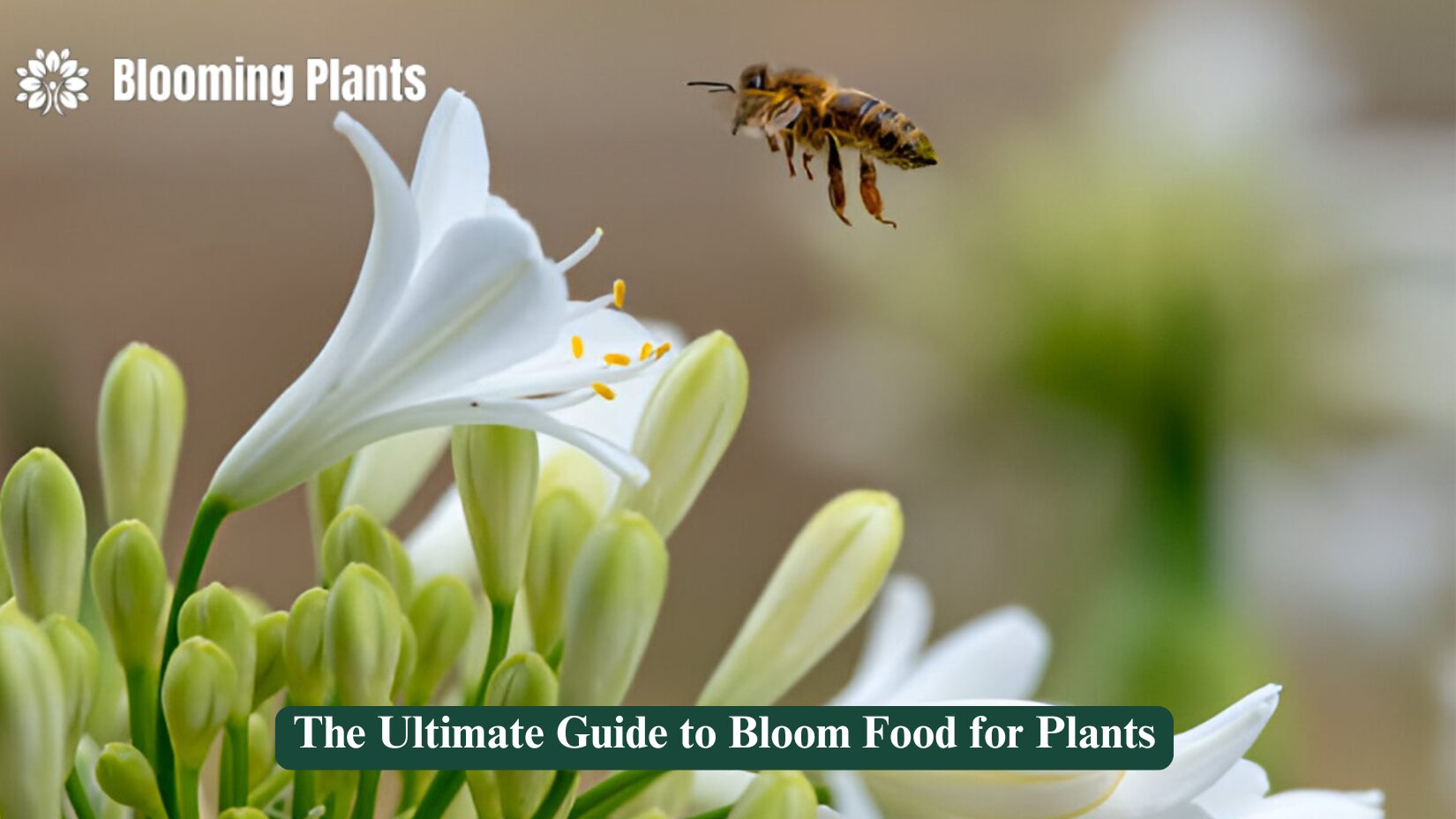Introduction
Plants, like humans, thrive when they receive the right nutrition at the right time. Bloom food for plants is a critical component in ensuring lush, vibrant blooms and healthy growth. But what exactly is bloom food? Why is it essential, and how can you use it effectively? This comprehensive guide explores everything you need to know, from understanding its components to practical tips on its application.
By the end of this article, you’ll not only understand the science behind bloom food but also feel confident about using it to enhance your plants’ growth. Whether you’re a beginner gardener or a seasoned green thumb, this guide has something for everyone.
Benefits of Bloom Food for Plants
Promotes Flowering
- Nutrient Optimization: Bloom food provides phosphorus and potassium, essential for flower production.
- Enhanced Energy Transfer: potassium helps plants transport nutrients and water effectively.
- Case Study: A study by the University of Florida found that phosphorus-rich fertilizers increased flower production in roses by 40%.
Strengthens Plant Health
- Disease Resistance: potassium strengthens cell walls, reducing susceptibility to pests.
- Stress Management: The nutrients help plants withstand environmental stress like drought.
- Example: Orchids treated with balanced bloom food had 25% fewer fungal infections.
Boosts Growth Speed
- Accelerated Development: Bloom food ensures plants allocate resources to flowers.
- Improved Root Systems: The secondary nutrients in bloom food also support strong roots.
- Tip: Use a bloom booster alongside regular fertilizers for optimal growth.
Key Components of Bloom Food
Phosphorus
- Role: stimulates flower and fruit development.
- Sources: bone meal, rock phosphate.
- Best Practices: Incorporate phosphorus early in the bloom stage for best results.
Potassium
- Role: Regulates water and nutrient uptake.
- Sources: potash, kelp extracts.
- Example: Tomatoes require potassium-rich bloom food for juicy fruits.
Micronutrients
- Iron: supports chlorophyll production.
- Magnesium: enhances photosynthesis.
- Zinc: Aids enzyme function.
- Case Study: Adding micronutrient-rich bloom food increased blooms in petunias by 30%.
When to Use Bloom Food
Pre-Flowering Stage
- Timing: Apply when buds begin forming.
- Reason: Sets the foundation for vibrant blooms.
- Tip: Combine with growth fertilizers for a balanced approach.
Peak Flowering Stage
- Timing: During full bloom.
- Reason: Maximizes flower size and health.
- Example: In marigolds, peak-stage feeding resulted in larger flower heads.
Late Blooming Stage
- Timing: As flowers start to mature.
- Reason: Supports seed development and longevity.
- Pro Tip: Avoid overfeeding to prevent nutrient burn.
Types of Bloom Food
Organic Bloom Food
- Components: bone meal, compost, fish emulsion.
- Benefits: eco-friendly and sustainable.
- Example: Espoma Organic Bloom Booster.
Synthetic Bloom Food
- Components: manufactured chemical fertilizers.
- Benefits: Quick results and precise nutrient ratios.
- Example: Miracle Gro Bloom Booster.
Homemade Bloom Food
- Ingredients: banana peels, eggshells, wood ash.
- DIY Recipe: Blend 2 banana peels, 1 cup of wood ash, and water for a natural bloom booster.
How to Apply Bloom Food
Soil Application
- Method: Mix granules or liquid into the soil.
- Tips: Water the soil beforehand to prevent root damage.
- Frequency: Once every 2-3 weeks.
Foliar Feeding
- Method: Spray diluted bloom food on leaves.
- Benefits: Faster absorption.
- Tip: Apply early in the morning for best results.
Hydroponic Systems
- Method: Add bloom food to the nutrient solution.
- Benefits: Ensures even distribution.
- Pro Tip: Monitor pH levels to avoid imbalances.
Common Mistakes to Avoid
Overfeeding
- Impact: Causes nutrient burn and stunted growth.
- Solution: Follow the recommended dosage on the label.
Using the Wrong Formula
- Impact: Can lead to nutrient deficiencies or excesses.
- Solution: Choose a bloom food tailored to your plant’s needs.
Ignoring Soil pH
- Impact: Limits nutrient uptake.
- Solution: Maintain a pH of 6.0-7.0 for most plants.
Table: Comparison of Popular Bloom Foods
| Product Name | Type | Key Nutrients | Price Range |
| Miracle-Gro Bloom | Synthetic | P, K | $10-$15 |
| Espoma Organic Bloom | Organic | P, K, Mg | $12-$18 |
| Homemade Banana Peel | DIY | P, K | Free |
Case Study: Using Bloom Food for Roses
Initial Condition
- Problem: Roses had weak, sparse blooms.
- Solution: Introduced phosphorus-heavy bloom food.
Results
- Outcome: Bloom count increased by 50% within a month.
- Lesson Learned: Targeted feeding can dramatically improve flowering.
Conclusion
Bloom food for plants is the secret ingredient for vibrant, healthy flowers. By understanding its components, application methods, and common mistakes, you can unlock your garden’s full potential. Whether you prefer organic solutions or quick synthetic fixes, there’s a bloom food option for every gardener. Start using bloom food today, and watch your garden flourish!
FAQs
- What is bloom food for plants?
Bloom Food is a specialized fertilizer designed to enhance flowering in plants. - What are the main nutrients in bloom food?
Phosphorus and potassium are the primary nutrients. - Can I use bloom food on all plants?
Yes, but always check specific plant requirements. - Is organic bloom food better than synthetic?
It depends on your goals. Organic is eco-friendly; synthetic provides quicker results. - How often should I apply Bloom Food?
Every 2-3 weeks during the flowering stage. - Can blooming food harm plants?
Overfeeding or incorrect application can harm plants. - What is a good DIY bloom food recipe?
Blend banana peels, wood ash, and water. - When should I start using Bloom Food?
Begin at the preflowering stage. - What is the best bloom food for roses?
Look for phosphorus-rich formulas like Espoma Organic Bloom. - Can I use bloom food in hydroponics?
Yes, ensure the formula is compatible with hydroponic systems.

